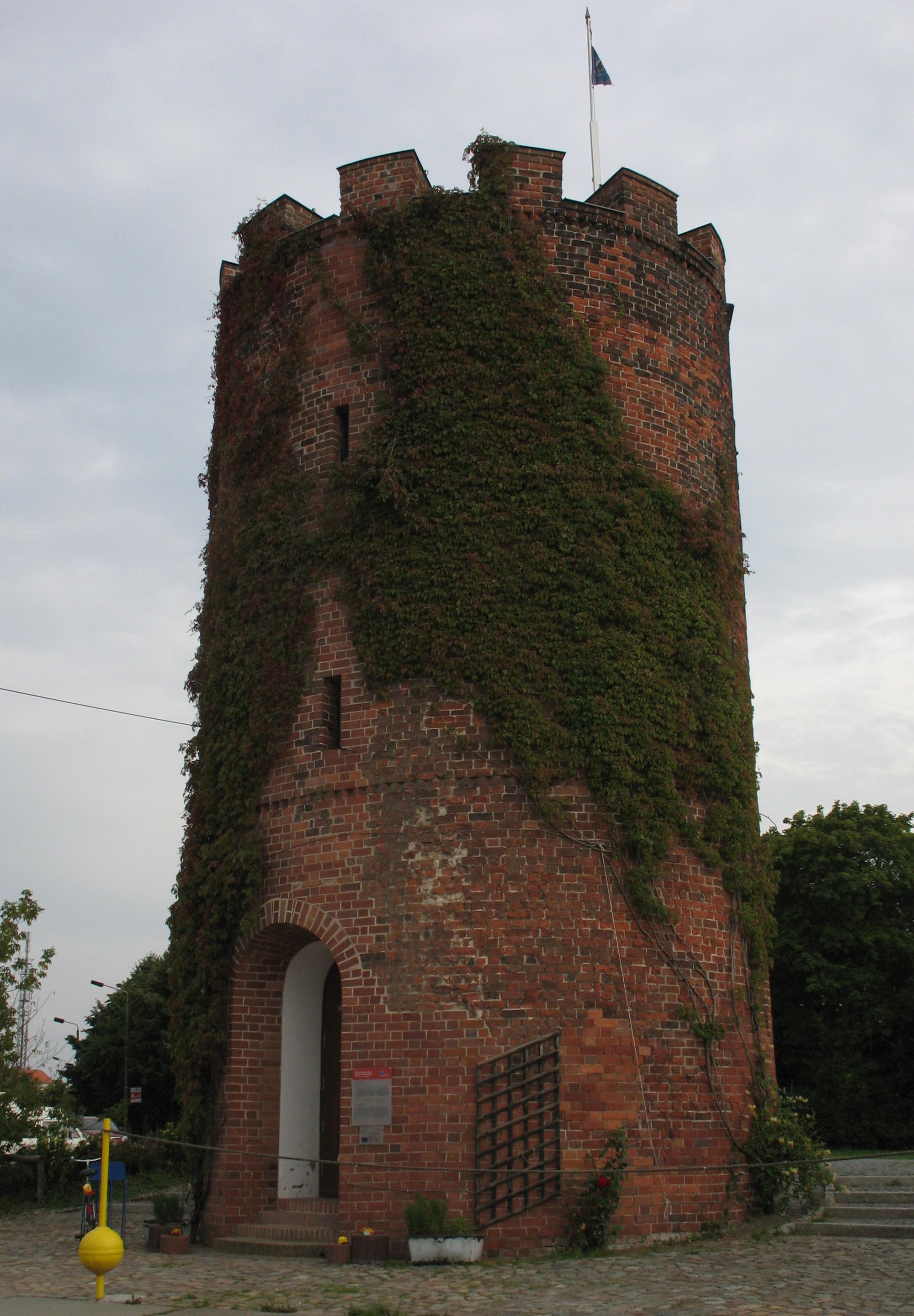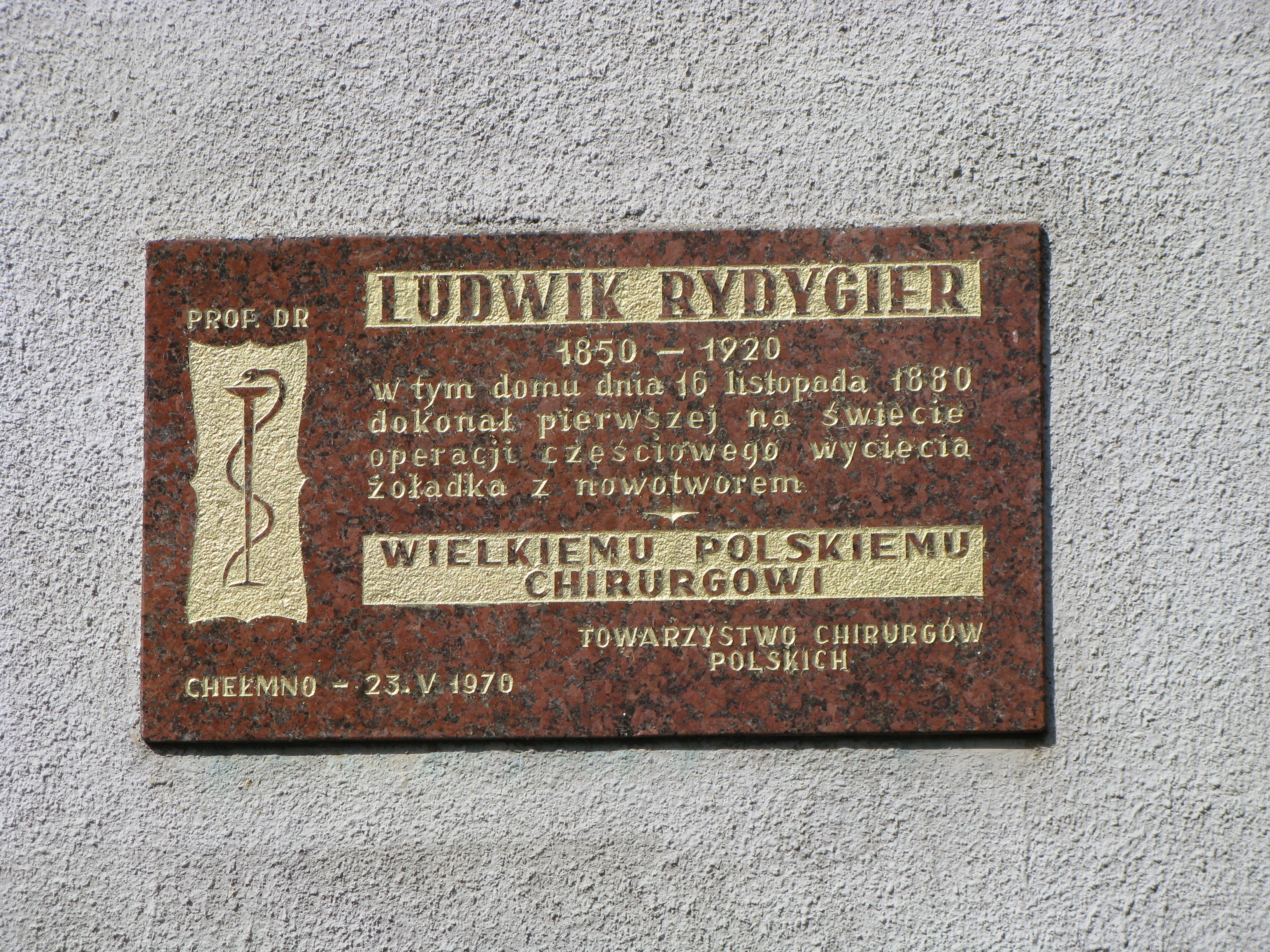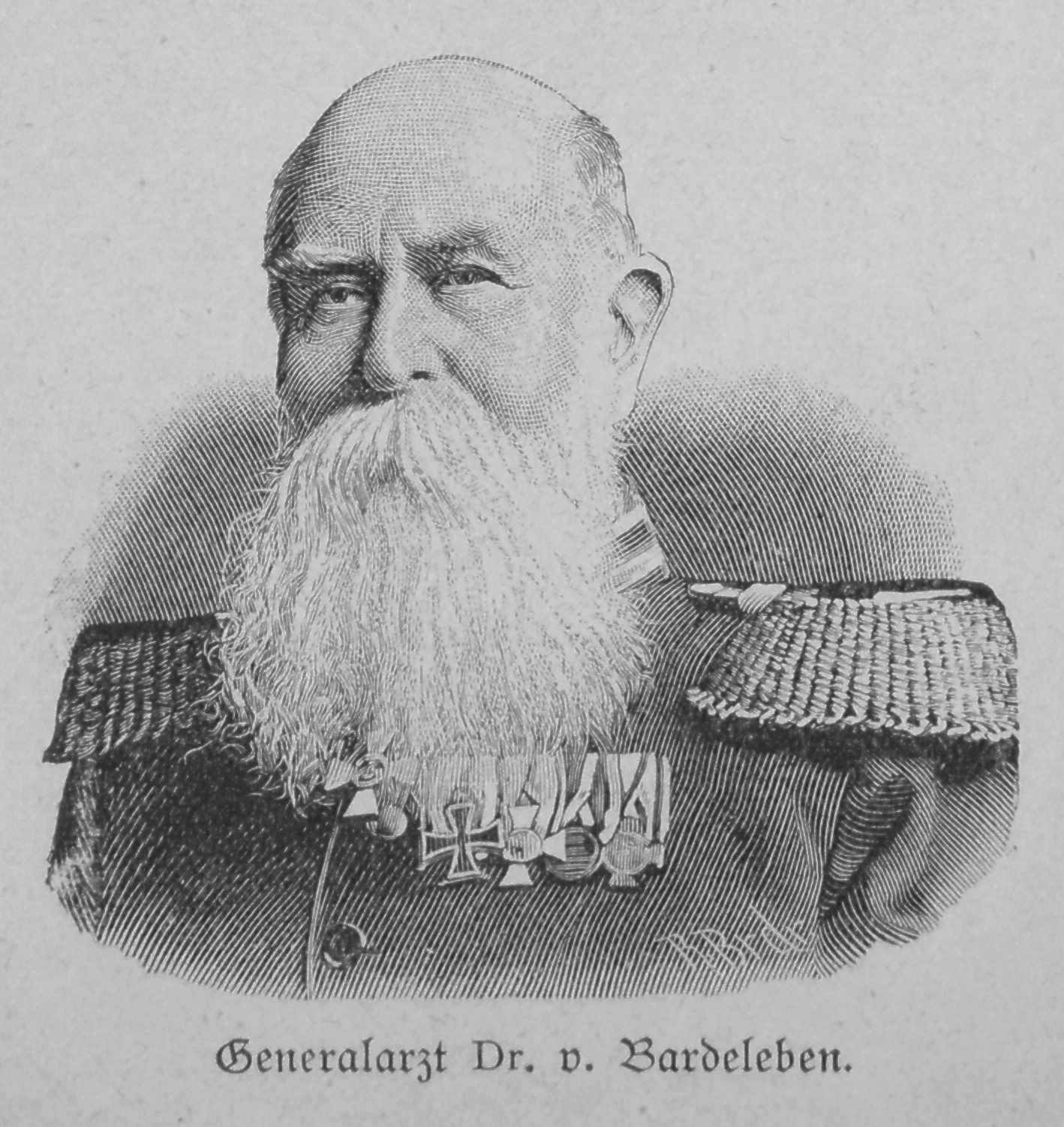|
Greifswald University Hospital
Greifswald University Hospital (german: Universitätsmedizin Greifswald) in Greifswald, Germany is a teaching hospital for the University of Greifswald's University of Greifswald Faculty of Medicine, medical school. Greifswald University Hospital is owned and operated by a non-profit ''Anstalt des öffentlichen Rechts'' in cooperation with the university and serves as one of the primary hospitals in the state of Mecklenburg-Vorpommern. It also fills the function of a tertiary referral hospital for the health care region. History The history of the medical school and the hospital in Greifswald date back to the founding of the University of Greifswald in the year 1456. An open clinic was established in 1794 with the help of the city council, where patients were treated for free with under the condition that students were present while the patient was being treated. In the 19th century, many new buildings and facilities were built. An entirely new hospital complex was built from 2 ... [...More Info...] [...Related Items...] OR: [Wikipedia] [Google] [Baidu] |
Greifswald
Greifswald (), officially the University and Hanseatic City of Greifswald (german: Universitäts- und Hansestadt Greifswald, Low German: ''Griepswoold'') is the fourth-largest city in the German state of Mecklenburg-Western Pomerania after Rostock, Schwerin and Neubrandenburg. In 2021 it surpassed Stralsund for the first time, and became the largest city in the Pomeranian part of the state. It sits on the River Ryck, at its mouth into the Danish Wiek (''Dänische Wiek''), a sub-bay of the Bay of Greifswald (''Greifswalder Bodden''), which is itself a sub-bay of the Bay of Pomerania (''Pommersche Bucht'') of the Baltic Sea. It is the seat of the district of Western Pomerania-Greifswald, and is located roughly in the middle between the two largest Pomeranian islands of Rugia (''Rügen'') and Usedom. The closest larger cities are Stralsund, Rostock, Szczecin and Schwerin. It lies west of the River Zarow, the historical cultural and linguistic boundary between West (west of the r ... [...More Info...] [...Related Items...] OR: [Wikipedia] [Google] [Baidu] |
Friedrich Loeffler Institute
The Friedrich Loeffler Institute (FLI), is the Federal Institute for Animal Health of Germany, that country's leading animal disease center. The institute was founded in 1910 and named for its founder Friedrich Loeffler in 1952. The FLI is situated on the Isle of Riems, which belongs to the City of Greifswald. Riems is a very small island that can be reached via a dam, which can be closed off in case of an outbreak. Due to these circumstances, Riems posed the perfect location for one of the most modern animal health research facilities in the world. The Friedrich Loeffler Institute is directly subordinated to the German Ministry of Food, Agriculture and Consumer Protection. Its main subject is the thorough study of livestock health and other closely related subjects including molecular biology, virus diagnostics, immunology, and epidemiology. Federal laws of Germany hold the FLI responsible for national and international animal disease control; it also poses the international re ... [...More Info...] [...Related Items...] OR: [Wikipedia] [Google] [Baidu] |
Hospitals Established In The 15th Century
A hospital is a health care institution providing patient treatment with specialized health science and auxiliary healthcare staff and medical equipment. The best-known type of hospital is the general hospital, which typically has an emergency department to treat urgent health problems ranging from fire and accident victims to a sudden illness. A district hospital typically is the major health care facility in its region, with many beds for intensive care and additional beds for patients who need long-term care. Specialized hospitals include trauma centers, rehabilitation hospitals, children's hospitals, seniors' ( geriatric) hospitals, and hospitals for dealing with specific medical needs such as psychiatric treatment (see psychiatric hospital) and certain disease categories. Specialized hospitals can help reduce health care costs compared to general hospitals. Hospitals are classified as general, specialty, or government depending on the sources of income received. A tea ... [...More Info...] [...Related Items...] OR: [Wikipedia] [Google] [Baidu] |
Hospital Buildings Completed In 2010
A hospital is a health care institution providing patient treatment with specialized health science and auxiliary healthcare staff and medical equipment. The best-known type of hospital is the general hospital, which typically has an emergency department to treat urgent health problems ranging from fire and accident victims to a sudden illness. A district hospital typically is the major health care facility in its region, with many beds for intensive care and additional beds for patients who need long-term care. Specialized hospitals include trauma centers, rehabilitation hospitals, children's hospitals, seniors' (geriatric) hospitals, and hospitals for dealing with specific medical needs such as psychiatric treatment (see psychiatric hospital) and certain disease categories. Specialized hospitals can help reduce health care costs compared to general hospitals. Hospitals are classified as general, specialty, or government depending on the sources of income received. A teachi ... [...More Info...] [...Related Items...] OR: [Wikipedia] [Google] [Baidu] |
Teaching Hospitals In Germany
Teaching is the practice implemented by a ''teacher'' aimed at transmitting skills (knowledge, know-how, and interpersonal skills) to a learner, a student, or any other audience in the context of an educational institution. Teaching is closely related to ''learning'', the student's activity of appropriating this knowledge. Teaching is part of the broader concept of ''education Education is a purposeful activity directed at achieving certain aims, such as transmitting knowledge or fostering skills and character traits. These aims may include the development of understanding, rationality, kindness, and honesty. Va ...''.Naïl Ver, Adeline Paul and Farid Malki, ''Professeur des écoles : droits, responsabilités, carrière'', Retz Éditions, 2014, 223 p. Methods Profession Training References {{Authority control ... [...More Info...] [...Related Items...] OR: [Wikipedia] [Google] [Baidu] |
Carl Ludwig Schleich
Carl Ludwig Schleich (19 July 1859 – 7 March 1922) was a German surgeon and writer. He is best known for his contribution to clinical anesthesia. In addition, he was also a philosopher, poet and painter. Biography Family Schelich's ancestors were a Munich family of prominent painters who had moved to Freienwalde. They included Robert Schleich and Eduard Schleich the Elder. Early life From a very early age, Schleich was exposed to a background in biology. His father was very interested in natural history and the leading theories in the epoch. Later Schleich would recall: In the year 1864, Graefe was a guest in my father's house during the historic conference of biologists, at which Darwin, Haeckel, and Virchow were the mutually hostile protagonists. I, alas, who was only five years of age, was not even aware of this earth-shaking event, since I was lying unconscious in the grip of meningitis. In his childhood, he frequently heard "extremely vigorous" debates about th ... [...More Info...] [...Related Items...] OR: [Wikipedia] [Google] [Baidu] |
Ferdinand Sauerbruch
Ernst Ferdinand Sauerbruch (; 3 July 1875 – 2 July 1951) was a Nazi Germany, German surgery, surgeon. His major work was on the use of negative-pressure chambers for surgery. Biography Sauerbruch was born in Barmen (now a district of Wuppertal), Germany. He studied medicine at the Philipps University of Marburg, the University of Greifswald, the Friedrich Schiller University of Jena, and the University of Leipzig, from the last of which he graduated in 1902. He went to Breslau in 1903, where he developed the Sauerbruch chamber, a pressure chamber for operating on the open human thorax, thorax, which he demonstrated in 1904. This invention was a breakthrough in thorax medicine and allowed heart and lung operations to take place at greatly reduced risk. As a battlefield surgeon during World War I, he developed several new types of limb prosthesis, prostheses, which for the first time enabled simple movements to be executed with the remaining muscle of the patient. Sauerbru ... [...More Info...] [...Related Items...] OR: [Wikipedia] [Google] [Baidu] |
Ludwik Rydygier
Ludwik Antoni Rydygier (21 August 1850 – 25 June 1920) was a Polish surgeon, professor of medicine, rector of the University of Lwów and Brigadier General of the Polish Army. He was one of the most distinguished Polish and worldwide known surgeons in the late 19th and early 20th century. Biography Early life and education Born in Dusocin (then officially ''Dossoczyn'') near Grudziądz (then officially ''Graudenz'') in the Prussian Partition of Poland, a territory annexed by Prussia during the Partitions of Poland in the late 18th century. He was one of 13 children of Karol and Elżbieta Riedigier. Since childhood he accented his Polish origin and identity. He attended the ''Collegium Marianum'' in Pelplin, and between 1859 and 1861 he attended gymnasium in Chojnice (then officially ''Konitz''), then also the gymnasium in Chełmno (then officially ''Kulm''), where he graduated in 1869. In years 1869–1874 he studied medical sciences at the University of Greifswald. At tha ... [...More Info...] [...Related Items...] OR: [Wikipedia] [Google] [Baidu] |
Gustav Nachtigal
Gustav Nachtigal (; born 23 February 1834 – 20 April 1885) was a German military surgeon and explorer of Central and West Africa. He is further known as the German Empire's consul-general for Tunisia and Commissioner for West Africa. His mission as commissioner resulted in Togoland and Kamerun becoming the first colonies of a German colonial empire. The ''Gustav-Nachtigal-Medal'', awarded by the Berlin Geographical Society, is named after him. Life and travels Gustav Nachtigal, the son of a Lutheran pastor, was born at Eichstedt in the Prussian province of Saxony-Anhalt. His father died of Phthisis pulmonum in 1839. After medical studies at the universities of Halle, Würzburg and Greifswald, he practised for several years as a military surgeon. He worked in Cologne, Germany. Nachtigal contracted a lung disease and relocated to Annaba in Algeria in October, 1862. He travelled to Tunis in 1863, where he studied Arabic, and took part as surgeon in several expeditions into Cent ... [...More Info...] [...Related Items...] OR: [Wikipedia] [Google] [Baidu] |
Friedrich Loeffler
Friedrich August Johannes Loeffler (; 24 June 18529 April 1915) was a German bacteriologist at the University of Greifswald. Biography He obtained his M.D. degree from the University of Berlin in 1874. He worked with Robert Koch from 1879 to 1884Isaac Asimov, ''Asimov's Biographical Encyclopedia of Science and Technology'', 2nd Revised edition as an assistant in the Imperial Health Office in Berlin. In 1884, he became staff physician at the Friedrich Wilhelm Institute in Berlin, and four years later became professor at the University of Greifswald. His development of original methods of staining rendered an important and lasting service to bacteriology. Early in his career, he began a study of parasitic diseases. Among his discoveries was the organism causing diphtheria (''Corynebacterium diphtheriae'') and the cause of foot-and-mouth disease (Aphthovirus). His description of the diphtheria bacillus, published in 1884, was the originating cause of an antitoxin treatment. He also c ... [...More Info...] [...Related Items...] OR: [Wikipedia] [Google] [Baidu] |
Germany
Germany,, officially the Federal Republic of Germany, is a country in Central Europe. It is the second most populous country in Europe after Russia, and the most populous member state of the European Union. Germany is situated between the Baltic and North seas to the north, and the Alps to the south; it covers an area of , with a population of almost 84 million within its 16 constituent states. Germany borders Denmark to the north, Poland and the Czech Republic to the east, Austria and Switzerland to the south, and France, Luxembourg, Belgium, and the Netherlands to the west. The nation's capital and most populous city is Berlin and its financial centre is Frankfurt; the largest urban area is the Ruhr. Various Germanic tribes have inhabited the northern parts of modern Germany since classical antiquity. A region named Germania was documented before AD 100. In 962, the Kingdom of Germany formed the bulk of the Holy Roman Empire. During the 16th ce ... [...More Info...] [...Related Items...] OR: [Wikipedia] [Google] [Baidu] |
Heinrich Adolf Von Bardeleben
Heinrich Adolf von Bardeleben (1 March 1819 – 24 September 1895) was a German surgeon born in Frankfurt (Oder). He studied medicine at the Universities of Heidelberg, Giessen, Paris and Berlin, receiving his doctorate in 1841 with a thesis on the construction of ductless glands. In 1848 he became an associate professor at Giessen followed by an appointment as a full professor of surgery at the University of Greifswald (1849). In 1868 he returned to Berlin, where he worked at the Charité until his death on 24 September 1895. ADB:Bardeleben, Adolf von @ he was rector of the University of Berlin in 1876–1877. Known for his innovations associated with new ... [...More Info...] [...Related Items...] OR: [Wikipedia] [Google] [Baidu] |



